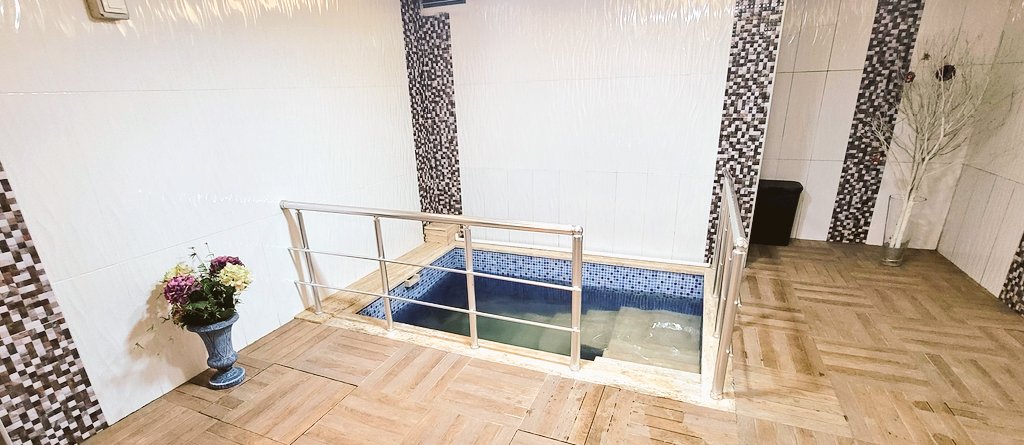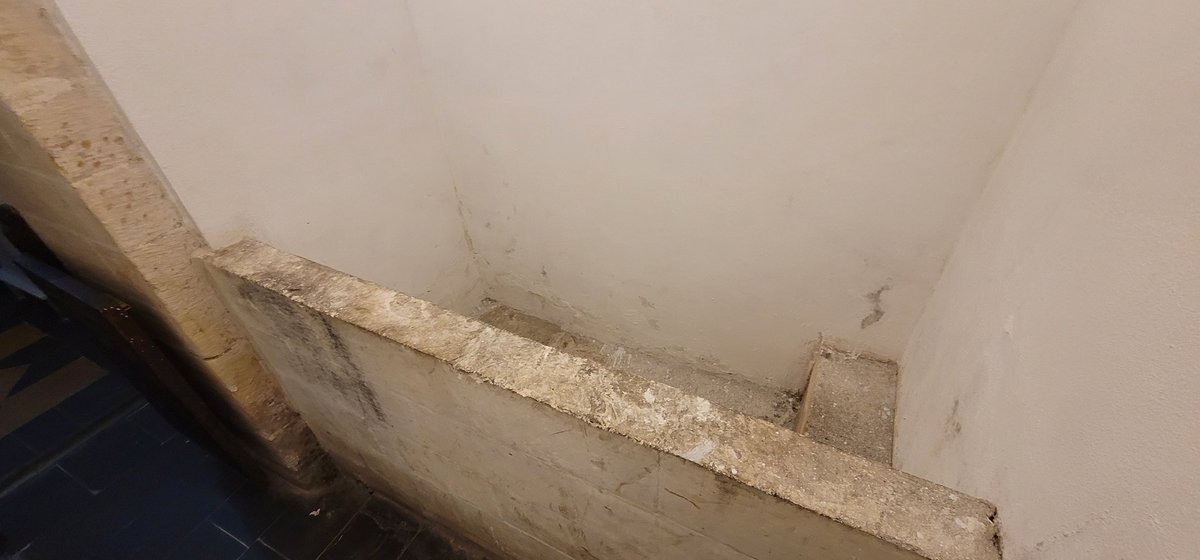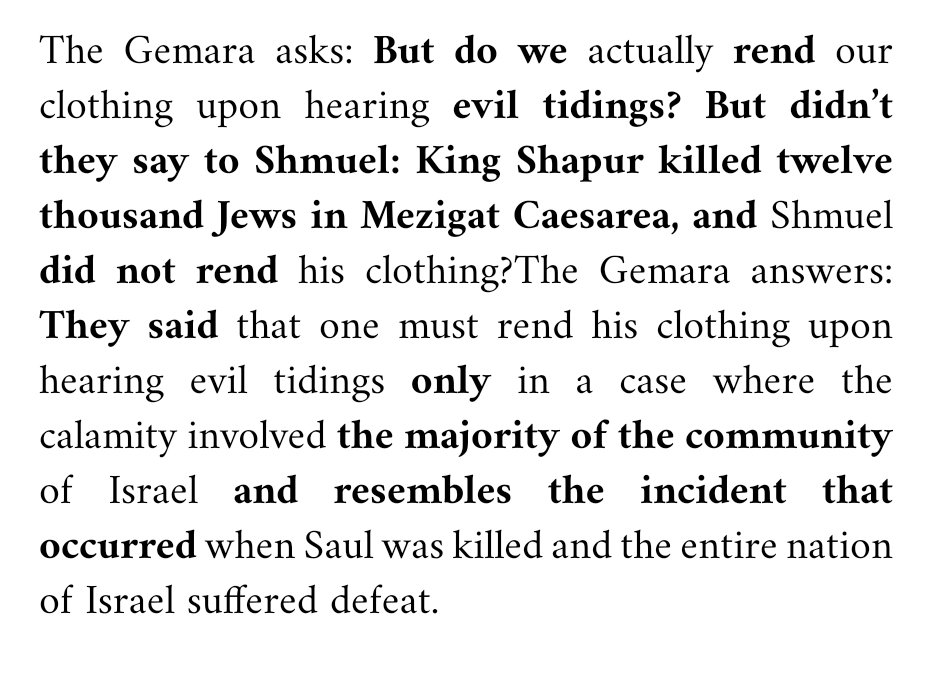Day 1 of #TurkeyJewishRoadtrip:
Bursa!
"Every day one should work so that Judaism should thrive - and it will" says in a mixture of #Ladino and Turkish Mr. Leon Elnekave - the head of the 60 strong Jewish community of #Bursa...
Bursa!
"Every day one should work so that Judaism should thrive - and it will" says in a mixture of #Ladino and Turkish Mr. Leon Elnekave - the head of the 60 strong Jewish community of #Bursa...
Leon bey looks over the Geruş or Expulsion synagogue - named after the various Jews expelled to Bursa - first by the byzantines and later by the Sefardi Jews who arrived from Spain in 1492... 

There are two "Bimas" at the beautiful #synagogue - one closer to the women section as Leon explains "so that they should hear" - I totally agree: "of course, the Torah is not only for the men!"
After praying Minha under the colorful dome - we were honored to open the Ehal, the Ark where the Torahs are stored... 

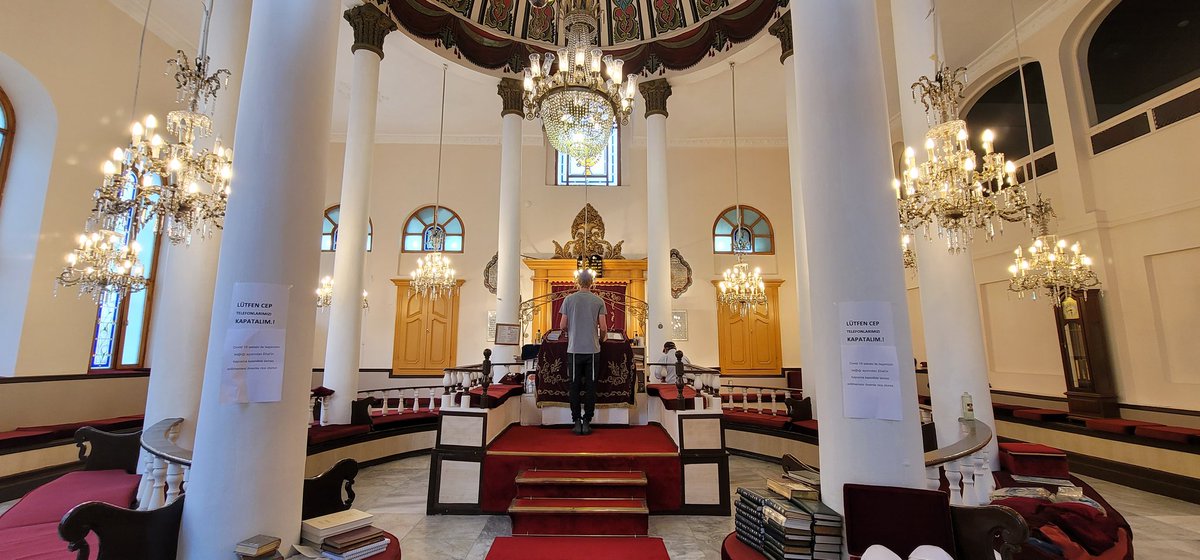

We also learned a new custom. A 'Minhag' which apparently exists only in Bursa! After I locked the Arc, I handed the keys on to the back of Yusuf's hand!
But why?
But why?

"If you give it in this manner you won't fight" says Leon in his native #Ladino (#JudeoEspanyol)...
(I am not sure I really understand why, but I for sure won't fight over it...)
(I am not sure I really understand why, but I for sure won't fight over it...)
The second synagogue in Bursa is the Mayor, or Major, synagogue. Some say it is named after the Jews of #Mallorca who found refuge here.
"It is older than the Geruş synagogue. About 10 years older" - not that it makes much of a difference to a 500 year old synagogue...
"It is older than the Geruş synagogue. About 10 years older" - not that it makes much of a difference to a 500 year old synagogue...

The the newly renovated Midraş, or little synagogue, hosts some interesting old religious articles... 



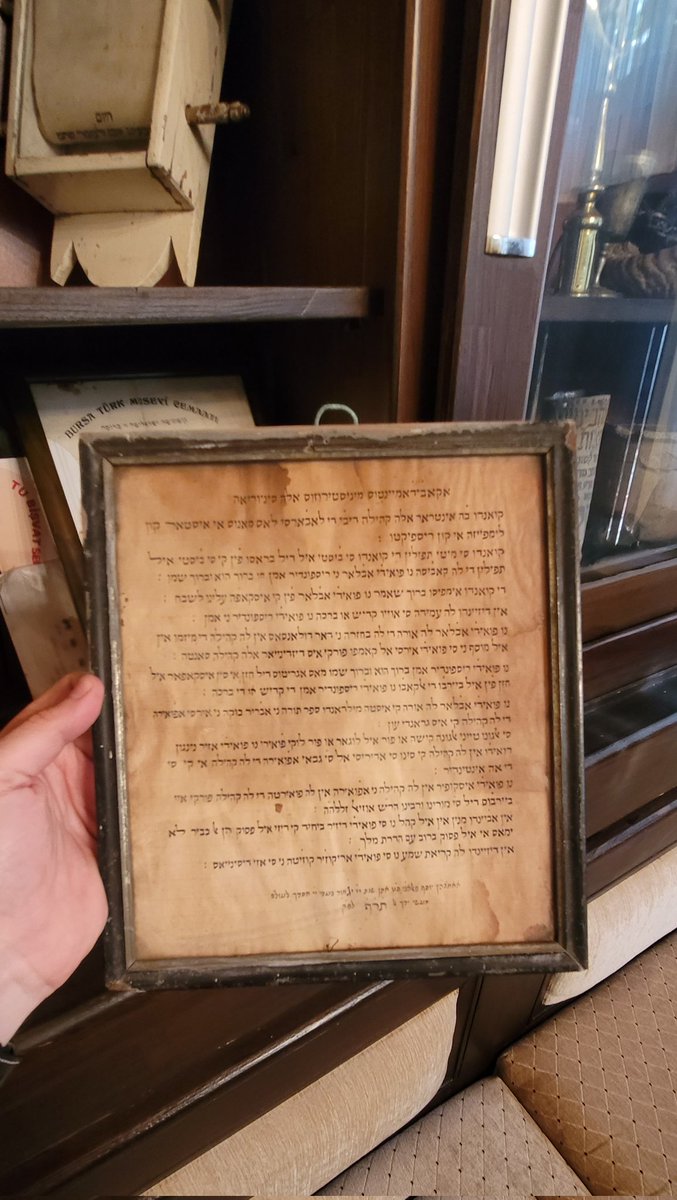

Old books... A Meam Loez printed in #izmir... 
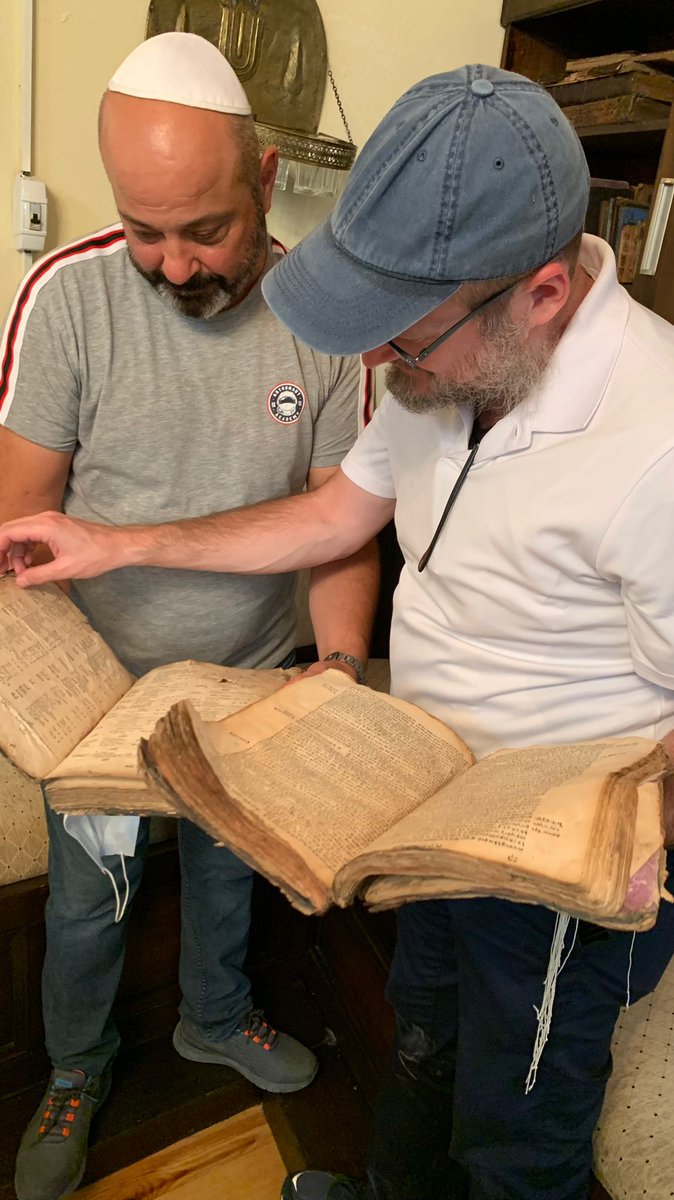
But chatting with Leon bey, shadowed by a cupboard packed with Burial Shrouds (hand woven by community members) gives a different vibe... 

There are 60 Jews left in Bursa - 2 beautiful synagogues, (the 3rd Etz Hayim was burned down some 60 years ago), a meticulously clean Jewish cemetery - but Leon is driven that this community should not just disappear! 

"Make sure to join us for Shabbat prayers in the winter" he says. "We have a Minyan, we will arrange a nice Kosher Seuda (meal) and you will see the Bursa Jewish community!"
I promise him that, 'Sin Neder' of course, I will...
I promise him that, 'Sin Neder' of course, I will...

and off we go to the beautiful #Uludag countryside...
• • •
Missing some Tweet in this thread? You can try to
force a refresh




















